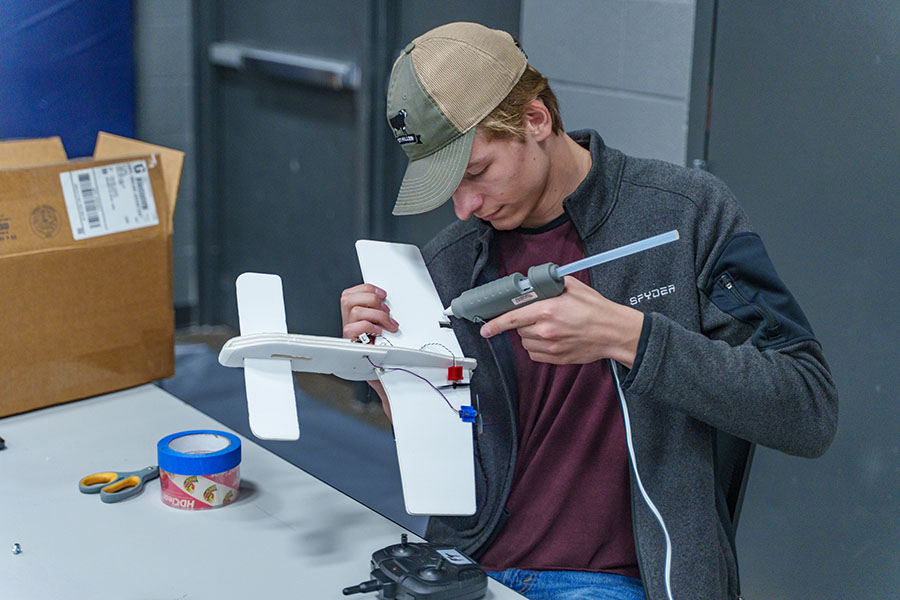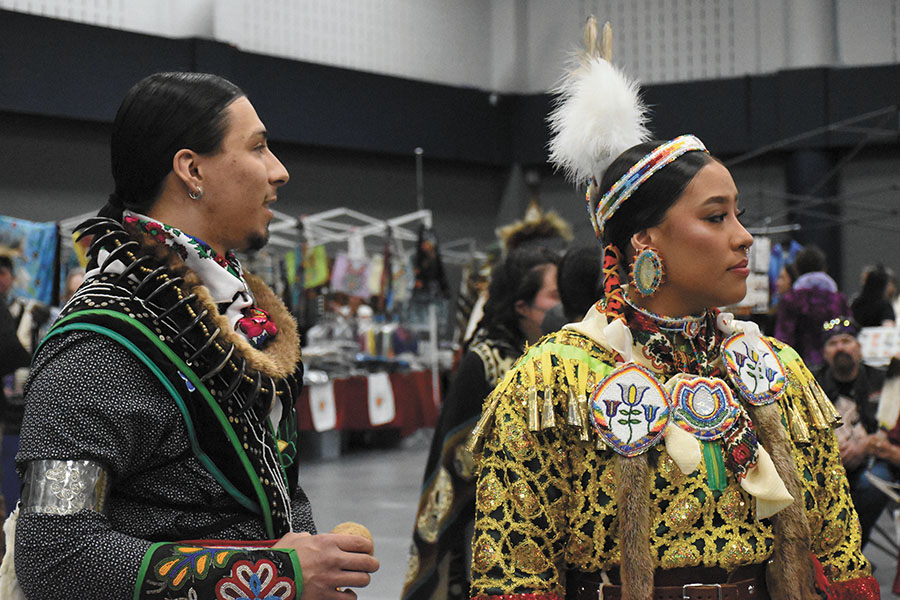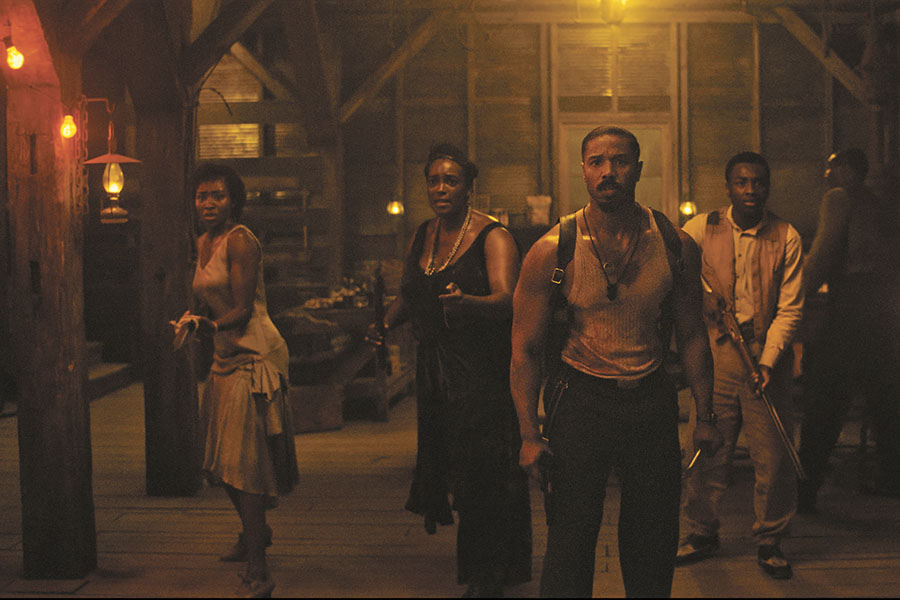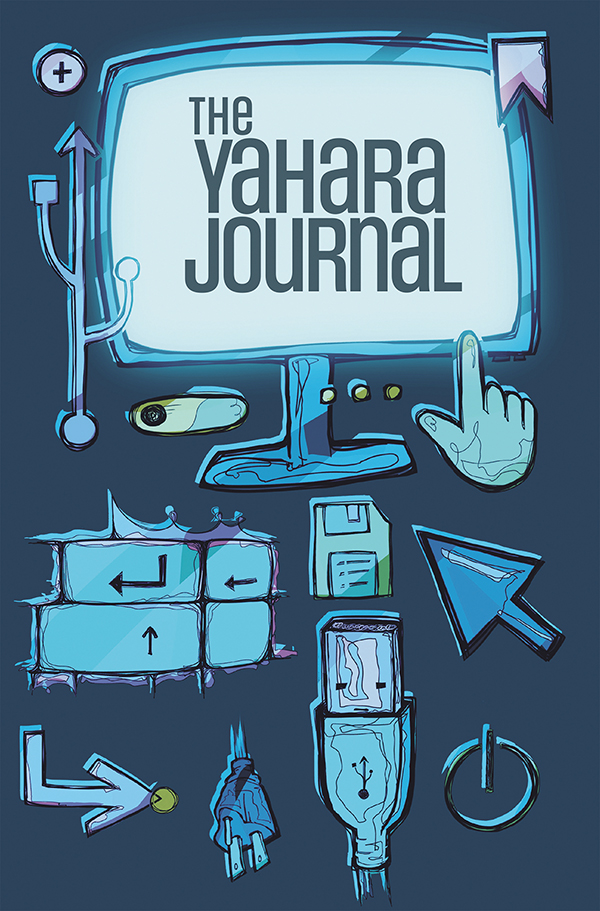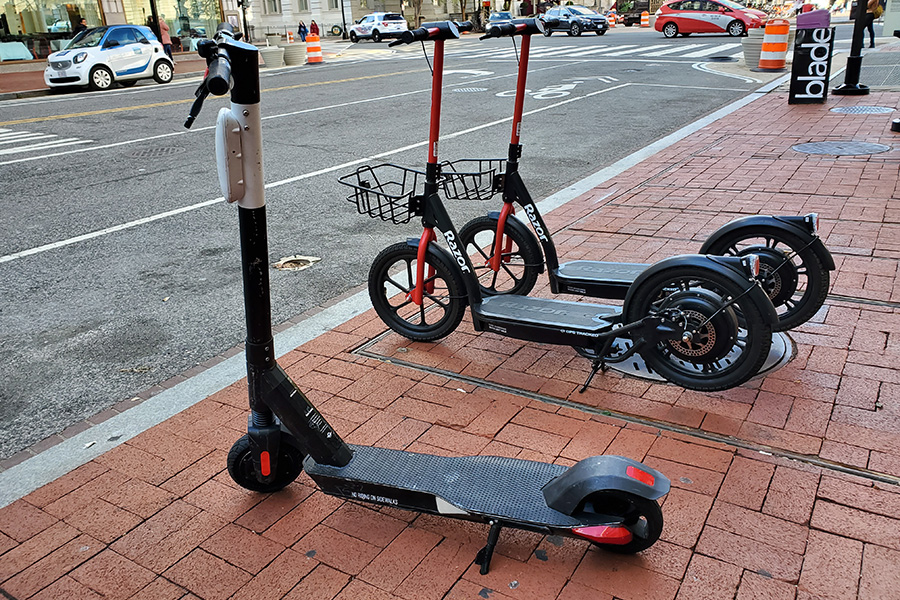Razor scooters have lost the edge on competition
A Bird and two Razor electric scooters rest on a walkway in Washington, D.C., waiting for riders.
November 13, 2019
This year, I was one of four people selected to represent the Clarion at a journalism conference in Washington D.C. This was a highly prestigious event, where the best and brightest of this nation’s future journalists convene to learn from each other, and from professionals in the industry.
On the weekend I was in the city, the Washington Nationals won their first World Series, and the sitting president was formally impeached. I was steps away from some of this country’s most beautiful and significant monuments. So after all that, what will I remember most from this weekend?
You read the title, you already know it’s scooters.
Washington D.C. is up to its memorials in electric scooters. For anyone who’s visited a big city within the last few years, this comes as no surprise. What got to me, though, was the variety of services providing two wheels and a motor.
All the usual players were present, like the industry leaders, Bird and Lime. I was more surprised to see similar scooters backed by ridesharing pioneers Uber and Lyft, but that wasn’t all. The list of brightly-colored, single-word-named scooter companies seemed to never end. I just wanted to get to a nearby McDonalds a few minutes faster, but with so many choices, which company should I trust with my credit card and driver’s license?
Then I saw a name that broke through the rest. A warm wind of nostalgia blew through my mind, accompanied by a vision of the sidewalk in front of my childhood home: Razor.
Razor debuted the first mass-market foldable scooter in the year 2000. At that point in history, children had been getting around on kick scooters for at least a century. But these toys were crude, often homemade, with little to no capability of steering. Razor scooters changed all that; their design was revolutionary.
The aluminum body of a Razor scooter is lightweight, yet strong enough to take the beating that children inevitably deliver to their favorite toys. The handlebars can both fold and telescope, meaning the scooter can be carried or stowed compactly when no longer needed. They’re fun, yet practical, and don’t require nearly as much skill as balancing on a skateboard. By the mid 2000’s, every suburban kid in America had a Razor; They were as ubiquitous as freeze pops, or DVD copies of “The Lion King.”
Now, that generation of kids has grown up. They’re entering the workforce, and starting to commute. Electric scooters have arisen as a so called “first mile, last mile” transportation alternative, filling the gap between limited public transportation stops and people’s specific destinations. Shared bicycles also fill this role, but they have their limitations. In most cities, they have designated stations in which they park, and it’s safest to keep to bike-friendly lanes.
Scooters, in contrast, are a bit more nimble. In a pinch, they can mingle with pedestrians on the sidewalk, and you can park them just about anywhere. This makes them appealing to young commuters who value a little extra efficiency, but I think the draw is more than just practical.
For people of my generation, riding a scooter has a special nostalgic magic. When we were young, the luckiest (read richest) of our friends had Razor’s electric model. They were gods, sailing down the sidewalks astride their lightning powered chariots. The rest of us could only stare in envy, as we kicked the pavement to follow in their wake.
Now e-scooters are on every corner, they can be yours for as little as a dollar. This should mark utopia achieved, our greatest dreams have been realized. Sadly, it’s not that simple. The reality is far more lackluster.
I wanted desperately to fall in love with e-scooters, but the reality is, they’re slow. Not every model has a speedometer, but on those that did, I consistently topped out at 11 miles per hour. In the immortal words of John Candy, this certainly “beats walking,” but a quote from ‘Planes, Trains and Automobiles’ is not enough to mark a mode of transportation as viable. If the service was cheaper, I might feel differently, but you’re charged by the minute for your usage. If the scooter feels slow, it naturally feels like you’re wasting both time and money.
Perhaps the e-scooter’s one saving grace is its size. Its small frame makes it practical and easy to park, yes, but it’s also the main thing that imbues any joy into the ride. Riding a Bird, or any similar scooter, is like playing as Toad in Mario Kart. You’re never going to be as fast as the bigger players on the track, and if one of them hits you, you’re absolutely dead. But there’s a pleasure in just being the most nimble vehicle around, to be able to maneuver like nothing else.
Unfortunately, it’s exactly this pleasure that Razor Share scooters lack. In an effort to differentiate itself, the Razor model deployed in DC comes in a different form factor. The scooter is unmistakably larger, it’s pneumatic wheels have actual spokes.The big tires eat up bumps in the road, and it can drop off curbs like a champ. The tradeoff comes in the steering, which feels muted compared to everything else on the market. In trying to make a niche for themselves, Razor made their scooter so different that they essentially re-created the experience of riding a bike.
And that’s the thing, DC already has a great bikeshare system. If you’re going to commute with it every day, a bike membership is more affordable. Additionally, bikes are just plain faster than the current e-scooters. I’ve been pondering this for days, but I can’t seem to figure out who Razor’s market is. Their ideal customer would be someone about 23 years old, who lives in the heart of DC, and has an extremely lucrative job right out of college. This person has fond memories of their childhood scooter, but also has arthritis, and can’t handle the rough ride of Bird, Lime, and the rest. Oh, and this person also hates bicycles.
So, logically, these are scooters aimed at nobody, but I think that’s the key. Razor Share Eco scooters are aimed at the people who use the least logic of all: tourists. As Segway tours have proven, people visiting the city for a few days will try any novel way to sightsee.
When people fly thousands of miles from their friends and family, they leave behind the only people who would shame them out of trying things like this. At that point, a vehicle’s weird shape or obnoxious paint color only serves to market it further. It’s certainly effective. That’s exactly how Razor got twenty of my dollars over the course of three days.
So, as a certified tourist rube, I can say with authority that Razor Share is probably not for you. It pains me to say, as I still hold a lot of love for the brand. But when it comes to shared rides, there are just too many better options. In its current form, Razor Share can’t make the cut.


